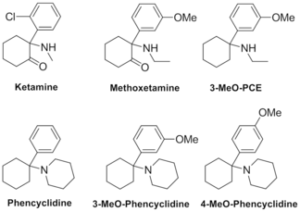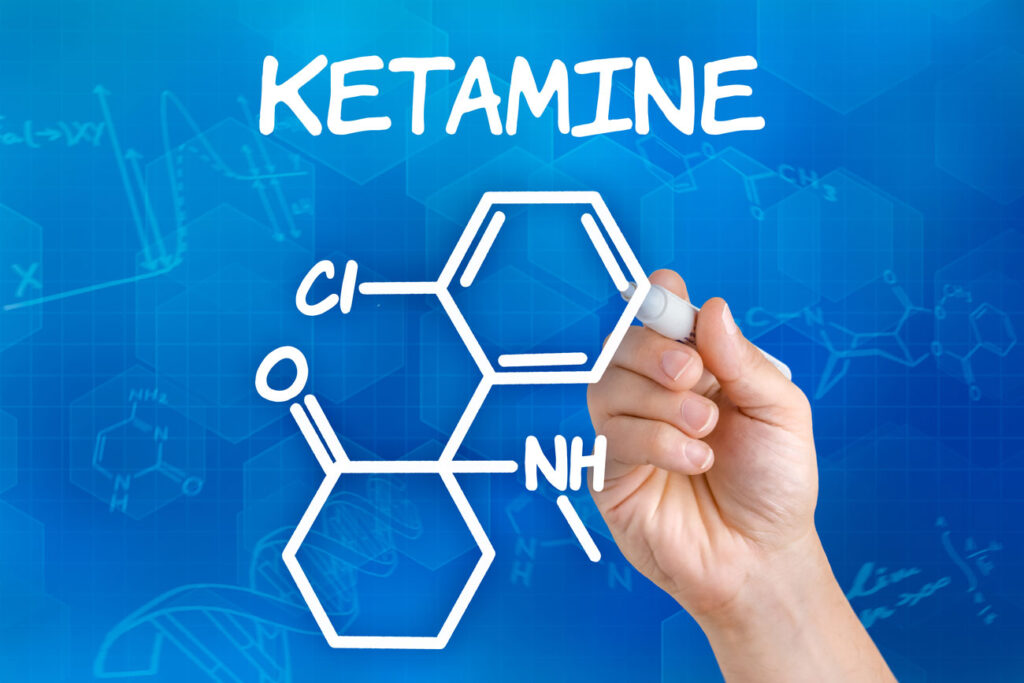No products in the cart.
Lastest News
Ketamine
Table of Contents
What is Ketamine
Ketamine, categorized as a “dissociative anesthetic,” is used in powdered or liquid form as an anesthetic, usually on animals. It can be injected, consumed in drinks, snorted, or added to joints or cigarettes. Ketamine was placed on the list of controlled substances in the US in 1999.
Short- and long-term effects include increased heart rate and blood pressure, nausea, vomiting, numbness, depression, amnesia, hallucinations, and potentially fatal respiratory problems. Ketamine users can also develop cravings for the drug. At high doses, users experience an effect referred to as “K-Hole,” an “out of body” or “near-death” experience.
Due to the detached, dreamlike state it creates, where the user finds it difficult to move, ketamine has been used as a “date-rape” drug.

How is Ketamine Abused?
In addition to its legal, medical uses, ketamine and synthesized analogs have become drugs of abuse with hallucinogenic properties. It has also been used as a “date rape” drug.
When abused, it is typically insufflated (“snorted” up the nose) in social situations. It is also injected, consumed orally as a liquid, or smoked in marijuana or tobacco. It is frequently abused in combination with other substances, such as cocaine or amphetamines. The use of multiple drugs has been fatal.
Why is Ketamine Used Medically?
Ketamine can provide pain relief and short-term memory loss (for example, amnesia of a medical procedure).
In surgery, it is used as an induction and maintenance agent for sedation and to provide general anesthesia.
It has also been used for pain control in burn therapy, battlefield injuries, and in children who cannot use other anesthetics due to side effects or allergies.
Ketamine, through blocking at the N-methyl-D-aspartate (NMDA) site, has rapid action in controlling symptoms of depression and acute suicidal ideation.
At normal doses, it is often preferred as an anesthetic in patients at risk of bronchospasm and respiratory depression.
Pharmacology of Ketamine
Ketamine is a noncompetitive N-methyl-D-aspartate (NMDA) receptor antagonist, and it blocks HCN1 receptors. However, at higher doses, it may also bind to the opioid mu and sigma receptors. It disrupts the neurotransmitter (brain chemical) glutamate. Glutamate is involved with learning, memory, emotion, and pain recognition. It can exhibit sympathomimetic activity which can lead to rapid heart rate and elevated blood pressure.
It is related to phencyclidine (PCP) but has less than 10% of the potency of pure PCP.
This agent is a lipid-soluble compound, has an initial rapid distribution and a large volume of distribution, with a half-life of 10 to 15 minutes. Secondarily, the drug distributes into peripheral tissues with a slower elimination half-life of up to 3 hours, undergoes hepatic metabolism, and is excreted in the urine.
How is Ketamine Abused?
In addition to its legal, medical uses, ketamine and synthesized analogs have become drugs of abuse with hallucinogenic properties. It has also been used as a “date rape” drug.
When abused, it is typically insufflated (“snorted” up the nose) in social situations. It is also injected, consumed orally as a liquid, or smoked in marijuana or tobacco. It is frequently abused in combination with other substances, such as cocaine or amphetamines. The use of multiple drugs has been fatal.
When misused, it is often sourced via the illegal diversion of prescription products, but analogs may be found on the streets.
How Quickly Does Ketamine Work?
An injection yields a quick response, with effects occurring in seconds to minutes.
“Snorting” leads to effects in roughly 5 to 15 minutes (this is the most common method of abuse).
Oral consumption requires between 5 and 30 minutes.
The effects of abuse typically last 1 to 2 hours, but the user’s judgment, senses, and coordination may be affected for up to 24 hours or longer. Sensations the user may seek include floating, stimulation, and visual effects.
High doses may dangerously reduce breathing, lead to muscle spasms or weakness, dizziness, balance difficulty, impaired vision, slurred speech, nausea and vomiting, and severe confusion.
Binge use, where the user indulges in the drug in excess amounts in a short period of time has been reported, as well.

